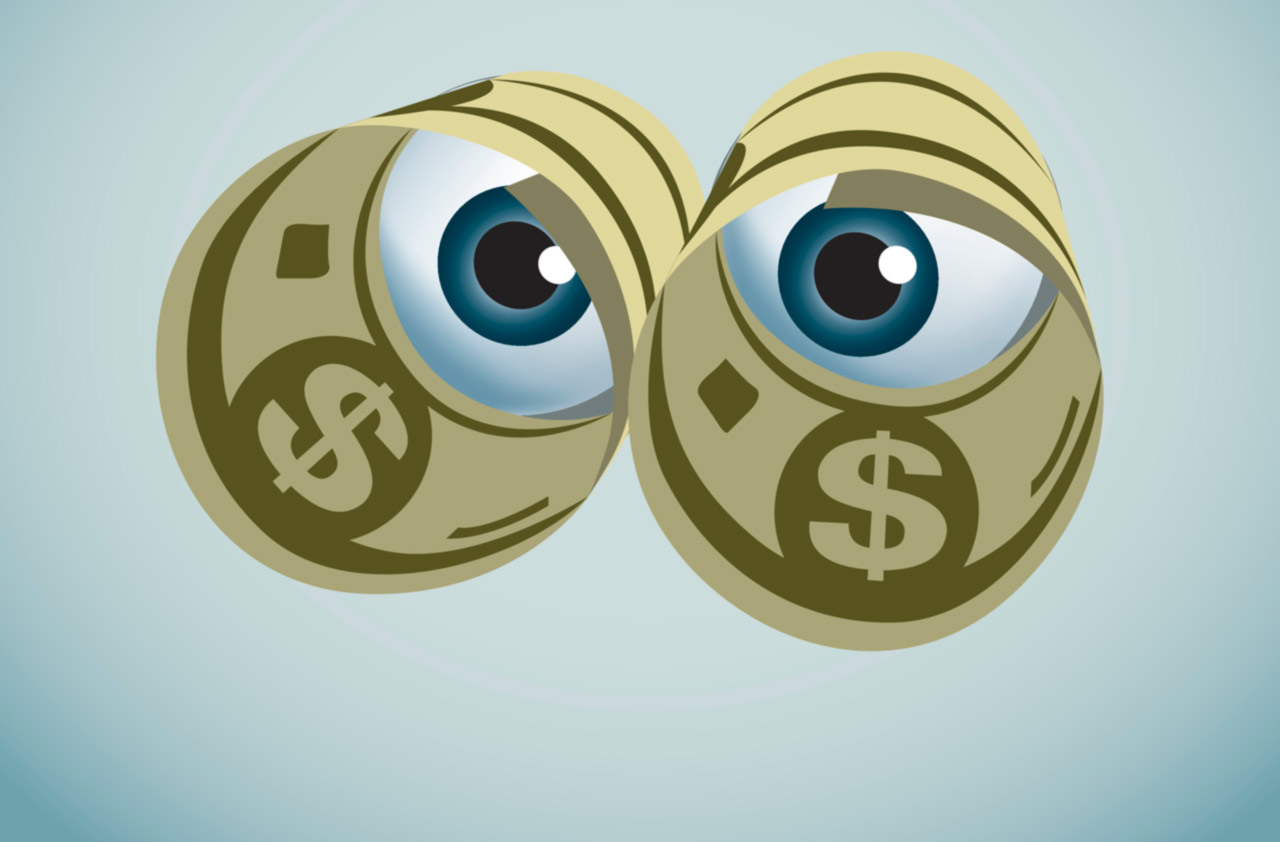A Watched Portfolio Never Performs
The more you agonize over your investment portfolio, the worse you think it's performing ... even when it's doing really well.


Perception is reality when it comes to a portfolio.
Many investors feel like their portfolios are always underperforming. No matter how well diversified or how many best-in-class strategies they own, it rarely feels like they're making progress.
The reason it feels this way is the same reason a watched pot never boils: the observer effect. By simply looking at our portfolios, we are affecting our performance.
From just $107.88 $24.99 for Kiplinger Personal Finance
Become a smarter, better informed investor. Subscribe from just $107.88 $24.99, plus get up to 4 Special Issues

Sign up for Kiplinger’s Free Newsletters
Profit and prosper with the best of expert advice on investing, taxes, retirement, personal finance and more - straight to your e-mail.
Profit and prosper with the best of expert advice - straight to your e-mail.
We are all aware of how making emotional decisions can destroy portfolio returns. But few are aware that how we mentally perceive performance can affect how we make investment decisions — even more so than the cold, hard facts.
Effects of prospect theory
The gap between performance and perceived performance is explained by prospect theory. Investopedia describes prospect theory as a phenomenon where “… losses cause greater emotional impact on an individual than does an equivalent amount of gain…”
This might be because fear is an absolute emotion and greed is a relative one. Fear is essential to our survival instincts and thus, we are inclined to draw out negativity to its worst conclusion. In the inverse, we expect good things to happen so we discount positivity. Even when things are the best and we’re comfortably in pursuit of greed, we are relatively certain that at any moment the other shoe is about to drop.
Whatever the explanation, this influence on investors’ psyches and their subsequent behavior can have a devastating impact on investment results.
The emotional experience of investing
The chart below shows how our perceptions, or misconceptions, can distort reality and create pain.

It depicts a simple example of how an investor might experience prospect theory: The raw performance of the S&P 500 index is in solid blue. However, since each person’s emotional experience changes depending on how often they observe this performance, we demonstrate the likely emotional experience in the dotted lines.
The green dotted line is how an investor, according to prospect theory, will perceive the portfolio if they look at it monthly. The dark blue dotted line is if they look at it weekly. The red dotted line is if they look at it daily.
In reality, the S&P 500 appreciated by over 700% during this time period. Investors who checked their investment results just one time, after 23 years, would see this very large gain. Plus they would not have experienced any of the volatility (and corresponding fear or greed) along the way. In other words, these investors avoided the negative effects of prospect theory.
On the other hand, investors who viewed their investment results monthly, according to the theory, would have a very different emotional experience. Remember, the theory suggests that a 10% gain feels moderately good, while a 10% loss feels exceptionally bad. At a monthly frequency, over 23 years, that’s 276 opportunities for prospect theory to create negative emotions.
The impact gets much worse the more frequent the observations. This leads to a dangerous cycle between fear, greed and prospect theory: When things are good, performance is discounted, and when they’re bad, investors overreact. This skewed perception enhances fear or greed, leading to more emotional decision-making that seems to never pay off. Why? Because the good is never good enough and the bad feels worse than it actually is. And the cycle continues.
Cure the negative feedback cycle
Now, we know investors aren’t going to just ignore their portfolios. They might get notifications from CNBC and Bloomberg on favorite stocks. Major social, economic or political movements around the globe will still send investors rushing to check the effect on their portfolios.
But at least investors can be conscious of the enemy — their own emotions.
Despite the influx of information, there’s still an easy way to counter prospect theory: portfolio balance. The more balanced a portfolio is, the less volatility it’ll experience. Lower drawdowns mean less fear and greed, which of course means fewer emotional decisions and reduced effects of prospect theory. Awareness of this pattern helps, too.
Finding balance in today’s economy
Being aware of the benefits of true diversification and the damage that fear and greed can do is as crucial as keeping up with the financial news. Being aware of the games that prospect theory can play with the mind is nearly as important as choosing quality investments, at least if investors are seeking to achieve a balanced portfolio that helps them feel in control of their financial futures.
Otherwise, even when they’re making money, they’ll never feel like they’re keeping up with the Joneses.
Profit and prosper with the best of Kiplinger's advice on investing, taxes, retirement, personal finance and much more. Delivered daily. Enter your email in the box and click Sign Me Up.

Stephen Scott is an alternatives and hedge fund investment veteran, with more than 25 years of experience in due diligence, risk management and index construction.
-
 How We Manage Our Finances Together: 'When You Keep Score, You Can End Up Resentful'
How We Manage Our Finances Together: 'When You Keep Score, You Can End Up Resentful'Douglas Boneparth, a certified financial planner, and his wife, Heather Boneparth, speak with Kiplinger about couples managing finances.
-
 I'm 45 and I've barely invested in the stock market. I recently inherited $50,000. What should I do?
I'm 45 and I've barely invested in the stock market. I recently inherited $50,000. What should I do?What should you do with a big inheritance? We asked a financial expert for advice.
-
 A Contrarian Approach Pays Off for This Bond Fund
A Contrarian Approach Pays Off for This Bond FundThe Dodge & Cox Income Fund has outperformed in 2025 thanks to its managers' fearless approach.
-
 7 Creative Ways to Spend Less and Save More In Retirement, Courtesy of a Financial Pro
7 Creative Ways to Spend Less and Save More In Retirement, Courtesy of a Financial ProWorried you won't have enough money later in life? Try redesigning your vision of retirement, and you may find your savings go further than you thought.
-
 I'm an Annuities Pro: This Is How You Can Cover the Income Gap While Your Social Security Benefits Grow
I'm an Annuities Pro: This Is How You Can Cover the Income Gap While Your Social Security Benefits GrowTaking Social Security later results in higher future income, but that can create an income gap. Annuities can boost income until you file for benefits.
-
 I'm a Financial Pro: You Really Can Make New Year's Money Resolutions That Stick (and Just Smile as Quitter's Day Goes By)
I'm a Financial Pro: You Really Can Make New Year's Money Resolutions That Stick (and Just Smile as Quitter's Day Goes By)The secret to keeping your New Year's financial resolutions? Just make your savings and retirement contributions 100% automatic.
-
 As We Age, Embracing Our Own Self-Doubt Can Be a Gift: A Cautionary Tale About Elder Financial Abuse
As We Age, Embracing Our Own Self-Doubt Can Be a Gift: A Cautionary Tale About Elder Financial AbuseAn aging couple hired a company that illegally required large deposits, and then they decided to stick with the company even after an employee stole from them.
-
 Domestic vs Offshore Asset Protection Trusts: A Basic Guide From an Attorney
Domestic vs Offshore Asset Protection Trusts: A Basic Guide From an AttorneyLearn the difference between domestic asset protection trusts and foreign or offshore asset protection trusts to help you decide what might work best for you.
-
 Now That You've Built Your Estate Planning Playbook, It's Time to Put It to Work
Now That You've Built Your Estate Planning Playbook, It's Time to Put It to WorkYou need to share details with your family (including passwords and document locations) and stay focused on keeping your plan up to date.
-
 I'm a Wealth Adviser: These 10 Strategies Can Help Women Prepare for Their Impending Financial Power
I'm a Wealth Adviser: These 10 Strategies Can Help Women Prepare for Their Impending Financial PowerAs women gain wealth and influence, being proactive about financial planning is essential to address longevity and close gaps in confidence and caregiving.
-
 I'm a Financial Planning Pro: This Is How You Can Stop These 5 Risks From Wrecking Your Retirement
I'm a Financial Planning Pro: This Is How You Can Stop These 5 Risks From Wrecking Your RetirementYour retirement could be jeopardized if you ignore the risks you'll face later in life. From inflation to market volatility, here's what to prepare for.